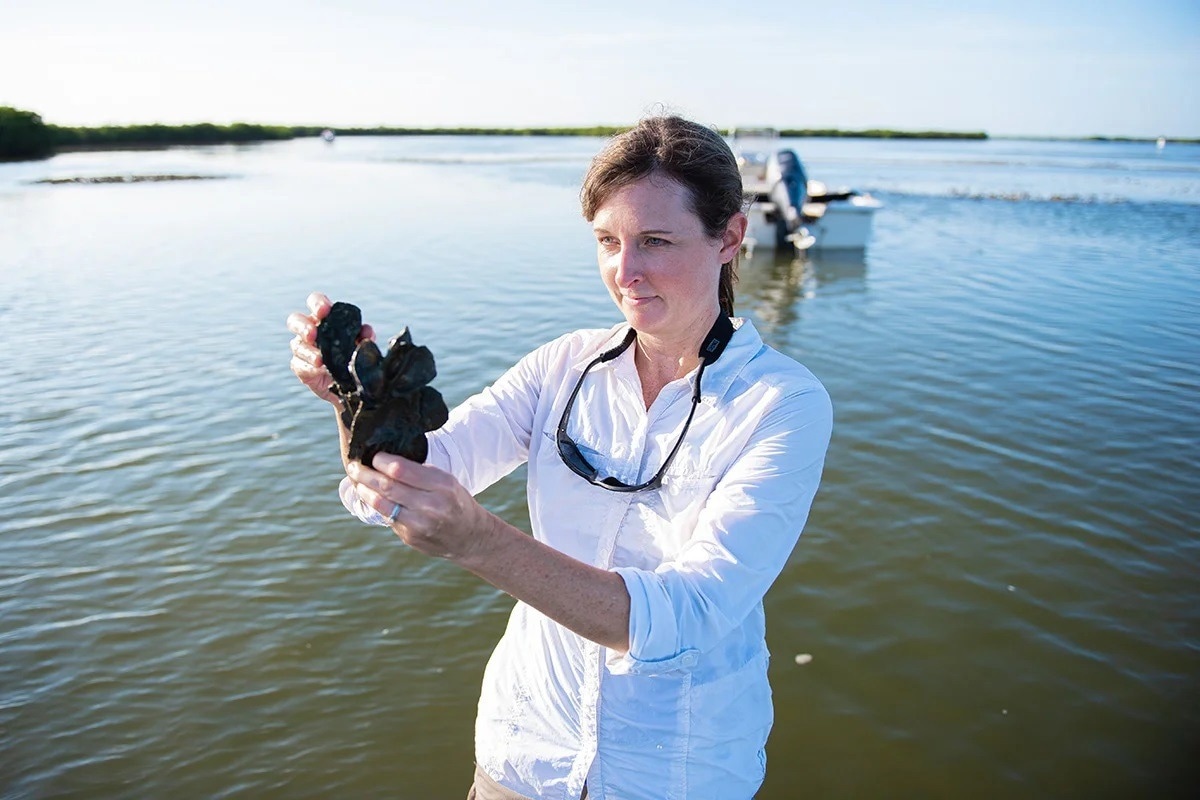A University of Central Florida engineering scientist is part of an international team of experts working to build oyster-based shoreline protection for US coastlines.
 Kelly Kibler, an associate professor in UCF’s Department of Civil, Environmental and Construction Engineering, is leading the oyster reef work for UCF. Image Credit: University of Central Florida
Kelly Kibler, an associate professor in UCF’s Department of Civil, Environmental and Construction Engineering, is leading the oyster reef work for UCF. Image Credit: University of Central Florida
The research is being conducted as part of a $12.6 million Defense Advanced Research Projects Agency (DARPA)-funded initiative to develop self-repairing, biological, and human-engineered reef-mimicking structures. The study is led by Rutgers University and involves scientists from the United States and Australia. UCF will get around $800,000 for its participation in the initiative.
The reef structures, which UCF is working to develop, will be utilized to reduce coastal flooding, erosion, and storm damage, which endangers civilian and Department of Defense infrastructure and personnel. To create a healthy ecosystem, the project design also supports the recruitment of non-reef forming organisms like marsh and seagrasses.
We’re not only focusing on the oyster reef, but we’re also bringing in a mosaic habitat concept. So, we’re not only working with one species but recognizing that multiple species that inhabit the intertidal zone work together to create further resilience.
Kelly Kibler, Associate Professor, Department of Civil, Environmental and Construction Engineering, University of Central Florida
The first of two 50 m reef installations will be installed in the East Bay of St. Andrews Bay, near Panama City in the Florida Panhandle, to enhance oyster recruitment.
The Reefense project is made up of three distinct teams. The Rutgers University team will concentrate on a shellfish reef, while the University of Miami and the University of Hawaii teams will work on corals.
Kibler’s team will study the reef structure's pre- and post-implementation conditions, as well as how the reef and habitat mosaic influence sediment flow near the shoreline.
This type of natural infrastructure design project is important especially to a state like Florida that is vulnerable to climate change impacts and rising sea level.
Kelly Kibler, Associate Professor, Department of Civil, Environmental and Construction Engineering, University of Central Florida
The project is divided into three stages that comprise design, implementation, and monitoring iterations. The oyster reef group is currently in Phase 1 and is planned to enforce the first structure in Phase 2, in 2024.
According to Kibler, the long-term success of the reefs will be determined by oyster recruitment and survival. If the project is proven effective, she believes the structures might be used in numerous parts of Florida and around the world.
We hope to have a cost-effective, transferable design that would be taken up by communities, homeowners, and landowners.
Kelly Kibler, Associate Professor, Department of Civil, Environmental and Construction Engineering, University of Central Florida